Motor Vehicle Accidents at Massachusetts Police Details
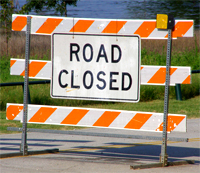 Massachusetts police officers assigned to protect public safety at roadside construction details are increasingly becoming the victims of car accidents themselves.
Massachusetts police officers assigned to protect public safety at roadside construction details are increasingly becoming the victims of car accidents themselves.
On Dec. 5, a Peabody police officer was struck by a 1991 Chevrolet pick-up truck while working on a Rte. 1 construction detail. He was thrown over the truck’s hood and transported to Massachusetts General Hospital with serious personal injuries. An initial police investigation found the driver was speeding, but it remains ongoing.
In recent years, negligent drivers have struck police officers on several construction details in Massachusetts and caused life-threatening personal injuries. In June 2010, state police Sgt. Douglas Weddleton was killed while working on a construction detail on Interstate 95 in Mansfield. The driver was charged with operating under the influence as well as other driving infractions.
Police officers are not the only ones vulnerable in construction site accidents. Construction workers as well as pedestrians, homeowners and others nearby are also at risk for injury, especially during night construction.
Drivers have a responsibility to operate with care in construction areas. Here are a few ways to make your travel safer:
Avoid Construction Zones If Possible. When you find a construction project on your daily commute, see if you can find an alternate route until work is complete. For projects in your local community, pay attention to your town’s government website and contact the police department’s business line if you have questions.
Identify Who Is In Charge of Traffic. Detail police officers typically direct traffic on many sites, but other work sites utilize civilian flaggers. The civilian flaggers should be dressed in fluorescent clothing and carrying traffic direction signs.
Give Other Drivers Space. Do not travel too closely behind other vehicles. It can be difficult to anticipate when another vehicle may stop short.
Slow Down. We all want to reach our destinations on time, but once you are stuck in construction traffic, it is best to take a deep breath and be as patient as possible to avoid a car accident.
Keep Your Eye on the Traffic. When there is a lot of activity going on at a construction site, there is a natural tendency to look at the crew and different machinery. But it is important to keep your eyes on the road.
Do Not Stop to Talk to the Detail Officer. Even if traffic volume is low, do not stop and ask the detail officer for help or directions. You are putting the officer at risk and confusing other drivers.
Avoid Construction Work Zones At Night. A large number of car accidents occur during night construction work because drivers are speeding, fatigued, operating under the influence or poor lighting.
Pedestrians and Cyclists. Like cars, it is also important for pedestrians and cyclists to follow the detail officer’s instructions for when to pass.
Read More
Decorating Safely for the Holidays
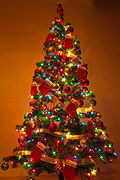 While it is the most wonderful time of the year, the holiday season is also a prime time for home fires.
While it is the most wonderful time of the year, the holiday season is also a prime time for home fires.
In Massachusetts, from 2002 to 2007, Christmas Day saw the second most number of residential fires of any day while Christmas Eve ranked ninth, according to the Office of the State Fire Marshal. The majority of these fires can be prevented with planning and awareness.The Boston injury lawyers at Breakstone, White & Gluck offer these tips to help you and your family enjoy the season safely:
Christmas Tree Watering
- Do not pick up your Christmas tree immediately after Thanksgiving.
- Make sure you have an adequate size tree water stand.
- Learn how much watering your tree needs. In general, you should use one quart of water per day for each stem diameter. Ask your local fire department for more instructions.
- Remove your tree in a timely manner to avoid letting it dry out. Many communities offer special Christmas tree pickups after the holiday.
- Another option is to cut up your tree branches and place them over a garden.
- Do not leave your tree outside unattended overnight for teenagers and vandals to find.
Christmas Tree Holiday Lights
- Keep your tree at least three feet away from flame or heat sources, such as fireplaces and radiators. These pose a fire risk and will dry out your tree faster.
- Never put candles on or near your tree.
- Check your Christmas tree lights for broken bulbs. If one is damaged, remove the whole string to avoid a fire accident.
- Make sure your Christmas tree lights are designed for indoor use.
- Unplug Christmas tree lights when you leave the house or go to bed.
- Check if your Christmas tree lights have been tested for safety by a nationally recognized laboratory. If they have, they will be marked ETL, UL or CSA.
- Do not put too many lights on your tree. Check the box for the appropriate number of strings.
- Place your tree near a power outlet to reduce use of extension cords. Make sure extension cords have been marked UL to show they have been tested.
- If you have an artificial tree, check to see if it has the label “Fire Resistant.”
Holiday Candles
- Use sturdy candle holders with flame-protective and non-combustible shades or globes.
- Never leave burning candles unattended.
- Place burning candles in the center of tables.
- Place burning candles at least four feet away from curtains, bedding and other flammables.
- Keep candles and matches away from children.
- When lighting candles, secure hair and clothing away from candles to prevent injuries.
- If you are lighting multiple candles, make sure you are aware of how much heat they generate.
Food Recall for Ocean Spray Dried Cranberries
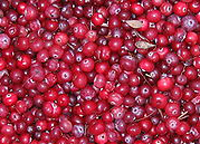 As the Christmas season begins, one Massachusetts company remains bogged down in Thanksgiving, after issuing a recall for its popular dried cranberry snacks.
As the Christmas season begins, one Massachusetts company remains bogged down in Thanksgiving, after issuing a recall for its popular dried cranberry snacks.
The day after Thanksgiving, Ocean Spray of Middleboro issued a recall for four package sizes of its Original Flavor Craisins Dried Cranberries product. The company voluntarily recalled the snack because of the possibility packages contained small hair-like metal fragments. The metal fragments resulted from an equipment malfunction on a production line, a company official told Vitals, an MSNBC.com blog.
Ocean Spray said it has received no consumer complaints or injury reports. Dried cranberry snacks are a growing product line for Ocean Spray. Last summer, a company official told the New England Business Bulletin that it was planning to expand its Middleboro facility and produce a third dried cranberry product.
The following Ocean Spray Original Flavor Craisins Dried Cranberries are part of this product recall:
- 5 oz Craisins® UPC: 00293-000
- 10 oz Craisins® UPC: 29456-000 and 29464-000
- 48 oz Craisins® UPC: 00678-318
- 10 lb bulk ingredient & foodservice UPC: 03477-000
Click here to see the full list with production dates for the recalled products.
Consumers who have purchased the recalled products are advised to discard them and preserve the UPC label and best by date. They should contact the Ocean Spray Consumer Hotline at 1-800-662-3263 for a coupon replacement.
Read More
Snow and Ice Accident Appeal Leads to New Trial in Massachusetts Superior Court
An appeal by a plaintiff in a Massachusetts snow and ice slip-and-fall case has led to the opportunity for trial. The Massachusetts Appeals Court vacated the original judgment and remanded the case for further proceedings after finding that the judge erred in allowing the defendant’s motion for summary judgment.
The case arose from a fall that occurred outside a McDonald’s restaurant in 2007. The plaintiff, Mercilia Lindor, slipped and fell on an icy sidewalk outside the restaurant, breaking her foot. While still lying on the sidewalk, Lindor witnessed another man close by slip and fall to his knees. The conditions were so bad that emergency personnel at the scene had difficulty moving the plaintiff. They had to ask McDonald’s employees to salt the area.
Prior to trial, McDonald’s moved for a summary judgment, arguing that the ice outside the restaurant had accumulated naturally, and that under long-standing Massachusetts common law it was not liable for an accident occurring under those conditions. The plaintiff filed no opposition, and the judge allowed the defendant’s motion, issuing the order on July 22, 2010.
The resulting judgment was entered on the docket on July 28, 2010.
Two days prior to this, however, on July 26, 2010, the Massachusetts Supreme Judicial Court decided the case of Papadopoulos v. Target Corp., in which it established a new standard for determining liability in cases of injury arising from ice and snow accidents: property owners must take “reasonable care” to remove all accumulations of ice and snow. This new standard does not require any distinction between “natural” and “unnatural” accumulations.
The Court also held that the ruling was retroactive, meaning it will be applied to all open and pending claims in which a judgment had not yet been entered. Although the judge issued an order for summary judgment prior to the Papadopoulos ruling, in Massachusetts a judgment is only considered final when a clerk dockets it. Fortunately for the plaintiff, this occurred on July 28, two days after the ruling in Papadopoulos. For this reason, the “reasonable care” standard established in Papadopoulos will apply to Lindor’s case.
The Court decided that there was a genuine issue of fact as to whether McDonald’s took “reasonable care” in protecting lawful visitors to the property, and as a result, the judgment was vacated, enabling Ms. Lindor to pursue her claim.
The case decided was Lindor v. McDonald’s Restaurants of Massachusetts, Inc., Mass. App. Ct No. 10-P-1615 (November 10, 2011).
Read More
Bicycle Accidents Rare in Boston Hubway Program, Officials Report
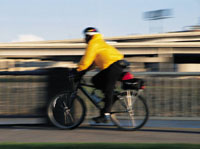 Boston’s popular Hubway bike sharing program will expand into Cambridge and Somerville next spring, providing more opportunities for healthy, environmentally-friendly and fun travel.
Boston’s popular Hubway bike sharing program will expand into Cambridge and Somerville next spring, providing more opportunities for healthy, environmentally-friendly and fun travel.
Boston’s program, which began in July 2011, is scheduled to close its 60 bike rental stations and 600 bikes this week for the winter. Bikes are expected to be available again next March, weather permitting. At the same time, Cambridge plans to open 20 stations in areas such as Harvard, Central and Inman squares. Somerville plans to open 8 stations including in Porter, Union and Davis squares.
Brookline is also working on adding two Hubway stations at Coolidge Corner and Brookline Village.
Boston’s Hubway program had 3,650 annual members in its first season. The system is partly funded by a $3 million grant from the Federal Transit Administration. It is intended for short trips as an extension of public transit. Annual members who pay $85 per year and those with one-day $5 and three-day $12 memberships can take unlimited rides, but they must return bikes within 30 minutes to avoid incurring additional fees.
Among annual members, the average ride lasted 17 minutes.
As officials close up the Boston program for the winter, they report concerns over an increase in bicycle accidents never materialized. The program saw no serious bike crashes requiring ambulance response and only two bike accidents overall.
But one issue is less than half of Hubway cyclists appeared to wear bike helmets, the program reported. Nearly 75 percent of riders on other bikes wore helmets. The city of Boston has tried to boost bike helmet use by working with 30 bike shops to offer subsidized bike helmets for less than $10.
The Boston bike accident lawyers at Breakstone, White & Gluck urge cyclists to learn Massachusetts bicycle laws. Click here for our guide.
We also urge cyclists to consider purchasing bicycle accident injury protection through their automobile insurance policies. Check your uninsured and underinsured motorist coverage, which provides protection if there is a bicycle accident. This insurance is affordable and can ease the physical and financial recovery after a bicycle accident. Click to read our guide What Every Bicyclist Needs to Know About Car Insurance.
Click here to read an article in The Boston Globe about the Hubway bicycle sharing program.
Click here to learn more about Boston’s Hubway sharing program.
Read More
Dangerous Toy Report Details Lead, Choking Hazards
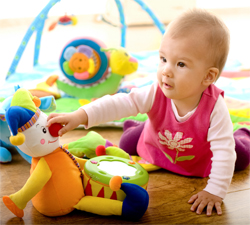 For a quarter century, the U.S. PIRG Education Fund (U.S. PIRG) has educated the public about toy safety for the holiday shopping season.
For a quarter century, the U.S. PIRG Education Fund (U.S. PIRG) has educated the public about toy safety for the holiday shopping season.
This year, U.S. PIRG’s “Trouble In Toyland: The 26th Annual Survey of Toy Safety,” warns consumers about over a dozen potentially dangerous toys, including those with dangerous levels of lead, phthalates and cadmium. Other warnings were issued for toys posing choking and strangulation hazards as well as those that create an excessively loud noise. The Boston product liability lawyers at Breakstone, White & Gluck urge you to glance at the report’s findings before you do your holiday shopping:
Toys With Dangerous Lead Limits. Lead has been banned in paint, children’s products and cookware in the United States since 1978, but it remains a problem in toys which are imported from other countries. Between October 2010 and November 2011, nearly 200,000 toys were recalled because of excessive lead limits, U.S. PIRG reported.
This year’s U.S. PIRG review found two toys on the market with lead levels which exceed the current 300 ppm standard, one toy that exceeded the prospective 100 ppm standard and four toys that exceeded the American Academy of Pediatrics recommendation of 40 ppm. This is the limit supported by U.S. PIRG.
Phthalates in Toys. Exposure to phthalates has been linked to have adverse health effects for children in the womb, including premature delivery and reproductive defects. U.S. PIRG identified two toys with limits exceeding the amount allowed by the Consumer Product Safety Improvement Act of 2008. The two toys include the Funny Glasses, manufactured by Joking Around, and the Sleep Mask, manufactured by Claire’s. Both exceed the 1000 ppm of banned phthalate standard.
Cadmium. Cadmium is a frequent additive in children’s jewelry. In response to a legal action in September, retailers agreed to sell only products that have less than 300 ppm cadmium. U.S. PIRG found no cases of noncompliance, but urged the Consumer Product Safety Commission to proceed with setting limits for cadmium in children and toy jewelry.
Choking Hazard. Choking on toys with small parts is the leading cause of toy-related deaths and injuries. Between 1990 and 2010, over 200 children in the United States died from choking.
Toy makers face complex regulations for testing and labeling their products. U.S. PIRG found several violations, including toys with no warning labels indicating they included small parts. The group called on the Consumer Product Safety Commission to take actions such as enlarging the small parts test tube size.
Loud Toys. U.S. PIRG reported several toys on the market exceed the ASTM 2003 standards for sound-producing toys, including Elmo’s World, Talking Cell Phone, manufactured by Fisher-Price; Victorious Stereo Headphones, manufactured by Nickelodeon; and Hotwheels, Super Stunt RAT BOMB, manufactured by Hotwheels.
Our recommendations:
- Shop wisely. If you have small children in the house, avoid toys for your older children which might represent choking hazards for your younger children.
- Avoid products which are obviously intended to generate loud noises or which may have headphones that cannot be turned down.
- Common sense says look for toys that have been on the market for more than a year because they are more likely to have been tested and proven safe.
- Buy toys that will promote physical activities to help your children stay strong and healthy.
To read the full U.S. PIRG “Trouble In Toyland: The 26th Annual Survey of Toy Safety,” click here.
Read More
Cooking a Safe Thanksgiving Dinner
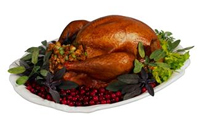 At Thanksgiving, the focus is on enjoying good food and family. But attention must also be paid to fire safety because Thanksgiving sees more residential fire deaths, injuries and property damage than any other day of the year.
At Thanksgiving, the focus is on enjoying good food and family. But attention must also be paid to fire safety because Thanksgiving sees more residential fire deaths, injuries and property damage than any other day of the year.
These fires are preventable with solid planning and good communication among those who are preparing the meal and others in the home. The Massachusetts personal injury lawyers at Breakstone, White & Gluck of Boston offer these tips to keep your holiday safe:
- Never leave food cooking unattended. If you have to leave the kitchen, turn the stove off or ask someone to watch the food.
- Make sure you have properly working smoke alarms near your kitchen.
- Keep oven mitts, wooden utensils, towels and other materials away from the stovetop.
- Use a timer to remind you when to stop cooking.
- Avoid using candles, especially near young children.
- Make sure cords to electrical tools and appliances, such as electric knives, are not dangling within reach of a child.
- Make sure children stay away from liquids and soft foods such as gravy and vegetables until they cool down. If these foods are too hot, they can cause skin burns.
What To Do If You Have A Cooking Fire
Keep a small fire extinguisher handy in your kitchen, either under the sink or close by in a closet. Inspect it periodically and make sure it is properly charged. If you have a cooking fire, it is best to call 911, wait outdoors for the fire department.
If it’s an oven fire, turn off the heat and keep the door closed. For small grease fires, smother the fire by sliding the lid over the pan and turning off the stove top. Leave the pan covered until it is cool. Never use water to extinguish a grease fire. You could be badly burned.
If you try to put out the fire, be sure everyone else is out of the home and you have a clear exit path.
Read More
Defective Products: The 10 Most Dangerous Toys of 2011
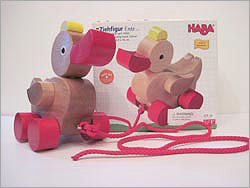 As the holidays approach, the lawyers at Breakstone, White & Gluck, PC urge you to shop carefully to avoid dangerous toys.
As the holidays approach, the lawyers at Breakstone, White & Gluck, PC urge you to shop carefully to avoid dangerous toys.
Each year, companies recall thousands of toys that put children at risk for injuries such as strangulation, lacerations, falls and death. According to the Consumer Product Safety Commission, the 34 toy recalls in fiscal 2011 were a marked decrease from 172 in 2008, but toy-related deaths rose slightly last year, with 17 children suffering wrongful deaths from defective toys.
In 2010, about 181,500 children were treated in emergency rooms for toy-related injuries. Non-motorized scooters continue to cause the most injuries, while toys with small parts and unsafe cords are also involved in many recalls.
Each year, a non-profit Boston organization, World Against Toys Causing Harm Inc., (WATCH) releases a list warning parents about the hazards of certain toys. The toys present hazards for burn injuries, strangulation injuries, and other bodily injury. This year’s “WATCH’s Most Dangerous Toys of 2011,” includes:
1) The Incredible Shrinky Dinks Maker
Potential hazard: Possible electric shock and burn injuries.
2) Sword Fighting Jack Sparrow
Potential Hazard: Possible eye and other bodily injuries.
3) ‘Gigan’ Godzilla Figure
Potential hazard: Possible puncture wounds.
4) Twist ‘n Sort
Potential hazard: Small parts cause a choking hazard.
5) Power Rangers Samurai Mega Blade
Potential hazard: Blade can cause injuries.
6) Fold and Go Trampoline
Potential hazard: Can cause injuries to people using it, including to the head and neck.
7) Pulling Animal Duck
Potential hazard: Potential for strangulation injuries.
8) School Bus
Potential hazard: Choking hazard.
9) Z-Curve Bow
Potential hazard: Danger to eyes.
10) Stepper ‘Low Rise” Stilts
Potential hazard: Head and other injuries from impact.
Thanksgiving Driving Safety
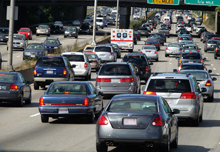 Thanksgiving is a special time of year when family and friends gather for tasty food and warm conversation. But before the turkey can be carved, many people have to travel. The majority of holiday travelers are driving. As they plan their trips, the National Highway Traffic Safety Administration (NHTSA) is urging travelers to buckle up through its campaign, “Buckle Up America. Every Trip. Every Time.” Other government agencies are stressing good planning to help drivers avoid motor vehicle accidents.
Thanksgiving is a special time of year when family and friends gather for tasty food and warm conversation. But before the turkey can be carved, many people have to travel. The majority of holiday travelers are driving. As they plan their trips, the National Highway Traffic Safety Administration (NHTSA) is urging travelers to buckle up through its campaign, “Buckle Up America. Every Trip. Every Time.” Other government agencies are stressing good planning to help drivers avoid motor vehicle accidents.
Seat Belt Use
During the 2009 Thanksgiving holiday travel weekend, 303 passenger vehicle occupants died in motor vehicle crashes, according to the NHTSA. The majority of these deaths occurred at night, making it important to buckle up at all hours.
Plan Travel Times
The Wednesday before the holiday and Sunday following are the busiest travel days. If possible, plan to travel at other times.
Massachusetts 511 Traffic Updates
Visit the Massachusetts 511 website before you travel. It reports on traffic, car accidents and travel conditions throughout the state. Click here for more information.
Fuel Up
Make sure your gas tank is full before you start traveling.
Slow Down
Expect to have to travel below the speed limit in heavy traffic and make sure not to follow other vehicles too closely.
Stay Calm
Expect to see aggressive drivers on the road. Move away and never engage them.
Drowsy Driving
Drowsy driving causes more than 100,000 car crashes each year, resulting in 40,000 injuries and 1,550 deaths, according to the NHTSA. Rest up before making the drive.
Read More
Toyota Recalls 550,000 Toyotas and Lexus Models
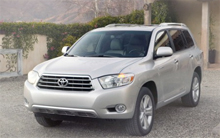 A defective crankshaft pulley is driving a new Toyota recall that will affect thousands of car owners. The Nov. 8 recall of 550,000 vehicles includes 420,000 cars in the United States. Toyota has now issued recalls for more than 13 million vehicles nationwide since September 2009. More vehicles have been recalled in other countries.
A defective crankshaft pulley is driving a new Toyota recall that will affect thousands of car owners. The Nov. 8 recall of 550,000 vehicles includes 420,000 cars in the United States. Toyota has now issued recalls for more than 13 million vehicles nationwide since September 2009. More vehicles have been recalled in other countries.
Toyota recalled the vehicles due to a crankshaft pulley defect that may cause steering problems. The vehicles have V6 engines and the U.S. models include 283,200 Toyota brand cars like Camry and Highlander vehicles and 137,000 Lexus vehicles.
Toyota said no injuries have been reported. The car manufacturer said the crankshaft pulley may have an inadequate amount of adhesive agent between the outer ring and the inner ring. This can cause the crankshaft pulley to become misaligned with the inner ring, possibly causing a noise or warning signal to light. When this happens, the belt for the power steering pump can detach from the pulley, making it hard for drivers to steer.
Toyota recalled 8 million vehicles between Nov. 2009 and the first quarter of 2010, most for defective pedals. In April 2010, the United States government fined the world’s largest automaker a record $16 million for its delayed response in notifying the National Highway Traffic Safety Administration regarding the defects.
Recalls have continued through 2011, including last February’s recall of 2.17 million vehicles to repair mechanical defects that could cause the cars to accelerate out of control.
The Nov. 8 recall involves these defective motor vehicles: the 2004 and 2005 Camry, Highlander, Sienna and Solara; the 2004 Avalon; and the 2006 Highlander HV. The affected Lexus models are the 2004 and 2005 ES 330 and RX 330 and the 2006 RX 400h.
In January, Toyota will mail car owners a notification to make an appointment to have their vehicle inspected. Toyota will fix any vehicle in need of repair at no cost to consumers.
Read More

